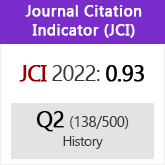Los inicios y primeras localizaciones de la Legio II Traiana Fortis
DOI:
https://doi.org/10.3989/gladius.2018.06Palabras clave:
Roma, legión, Traiana Fortis, Guerras Dacias, Trajano, Adriano, Partia, Judea, EgiptoResumen
Las legiones romanas altoimperiales eran unidades militares con gran movilidad a las que se requería que se desplazaran rápidamente allá donde su emperador ordenara y por lo tanto algunas de ellas no tuvieron asignado un asentamiento definitivo durante mucho tiempo. Analizamos y discutimos las posibles primeras localizaciones de la Legio II Traiana Fortis, la segunda legión fuerte de Trajano, una legión que, hasta su asentamiento definitivo en Egipto, fue acuartelada en Judea. Analizando la evidencia arqueológica y epigráfica actual, concluimos en qué año exacto fue transferida a Judea y qué legiones cambiaron de localización en Egipto y Oriente Próximo durante los primeros años de mandato de Adriano
Descargas
Citas
Absil, M. (2000): «Legio I Italica», in Y. Le Bohec, Les légions de Rome sous le Haut-Empire, Lyon: 228-238.
Ameling, W., Cotton, H. M., Eck, W., Isaac, B., Kushnir-Stein, A., Misgav, H., Prince, J. and Yardeni, A. (eds.) (2011): Corpus Inscriptionum Iudaeae/Palestinae. Volume II: Caesarea and the Middle Coast, Göttingen, 134.
Avi-Yonah, M. (1973): «When did Judaea become a consular province?», Israel Exploration Journal 23.4: 209-213.
Bruun, T. and Edmonson, J. (2015): The Oxford Handbook of Roman Epigraphy, London, Oxford University Press: 291-294. https://doi.org/10.1093/oxfordhb/9780195336467.001.0001 PMid:26297388
Budge, E. A. W. (1932): The Chronicle of Gregory Abû'l Faraj, 1225-1286, the Son of Aaron, the Hebrew Physician, Commonly Known as Bar Hebraeus; Being the First Part of His Political History of the World , London, Oxford University Press, I, 52.
Dabrowa, E. (1993): «Legio X Fretensis, a prosopographical study of its officers (I - III c. AD)», Historia Einzelschriften 66: 13-16.
Dabrowa, E. (2000): «Legio X Fretensis», in Y. Le Bohec, Les légions de Rome sous le Haut-Empire, Lyon: 317-325.
Daris, S. (2000): «Legio II Traiana Fortis», in Y. Le Bohec, Les légions de Rome sous le Haut-Empire, Lyon: 359-363.
Eck, W. (1984): «Zum konsularen Status von Iudaea im frühen 2. Jh.», Bulletin of the American Society of Papyrologists 21: 1-4, 56-61.
Farrokh, K. (2007): Shadows in the desert: ancient Persia at war , Osprey Publishing, 158-163.
González, J. (2000): «Reflexiones en torno a la cronología de las campa-as párticas de Trajano», in J. González (ed.), Trajano emperador de Roma, Atti del Congreso, Siviglia, 14-17 settembre 1998 , Roma: 203-217.
Isaac, B. (1982): «Legio II Traiana in Judaea - a reply», Zeitschrift fur Papyrologie und Epigraphik 47: 131-132.
Isaac, B. and Roll, I. (1979): 'Legio II Traiana in Judaea', Zeitschrift fur Papyrologie und Epigraphik 33: 149-156.
Isaac, B. and Roll, I. (1998): «Judaea in the early years of Hadrian's reign», in B. Isaac, The Near East Under Roman Rule: Selected Papers, Leiden: 182-197.
Jones, B. W. (1992): The Emperor Domitian, London, Routledge, 141. https://doi.org/10.4324/9780203300916
Keppie, L. J. F. (1973): «The Legionary Garrison of Judaea under Hadrian», Latomus 32: 859-864.
Keppie, L. J. F. (1990): «The History and Disappearance of the Legion XXII Deiotariana», in A. Kasher, U. Rappaport, G. Fucks (ed.), Greece and Rome, Jerusalem: 54-61.
McElderry, R. K. (1908): «The Second Legionary Camp in Palestine», Classical Quarterly 2: 110-113. https://doi.org/10.1017/S0009838800005498
Mor, M. (2003): «The Geographical Scope of the Bar-Kochba Revolt», in P. Schäfer (ed.), The Bar Kochba War reconsidered: New Perspectives on the Second Jewish Revolt against Rome, Tübingen: 107-132.
Parker, H. M. D. (1928): The Roman Legions, London, Oxford University Press, 114.
Rankov, B. (2007): «Military Forces», in P. Sabin, H. Van Wees and M. Whitby (eds.), The Cambridge History of Greek and Roman Warfare. Volume II: Rome from the late Republic to the late Empire, Cambridge, Cambridge University Press, 42. https://doi.org/10.1017/CHOL9780521782746.003
Rea, J. (1980): «Legio II Traiana in Judaea?», Zeitschrift fur Papyrologie und Epigraphik 38: 220-221.
Ritterling, E. (1925): «Legio», Realencyclopädie der Classischen Altertumswissenschaft XII, 2, Stuttgart, 1484.
Rodríguez González, J. (2017): Diccionario de batallas de la Historia de Roma (753-476 d.C.) Edición revisada y aumentada , Madrid, Almena Ediciones, 499.
Salmon, E. T. (1990): A History of the Roman World from 30 B.C to A.D. 138 , London, 248.
Schwartz, S. (2006): «Political, social and economic life in the Land of Israel», in S. T. Katz (ed.), The Cambridge History of Judaism , vol. IV , Cambridge: 23-52. https://doi.org/10.1017/CHOL9780521772488.003
Seeck, O. (ed.) (1876): Notitia dignitatum: accedunt Notitia Urbis Constantinopolitanae et laterculi prouinciarum , Berlin, Weidmann: 59, 64.
Southern, P. (2007): The Roman Army: A Social and Institutional History , Oxford University Press: 142-4.
Strobel, K. (2010): Kaiser Traian. Eine Epoche der Weltgeschichte, Regensburg, 364.
Syme, R. (1958): «Consulates in Absence», The Journal of Roman Studies 48: 1-9. https://doi.org/10.2307/298206
Syme, R. (1971): «The first garrison of Trajan's Dacia», Danubian Papers, Bucharest: 91-93.
Urloiu R. (2014): «Again on Legio II Traiana Fortis», EUBSR 2013 International Conference, vol. 2: History and Civilization , Italian Academic Publishing: 30-45.
Descargas
Publicado
Cómo citar
Número
Sección
Licencia
Derechos de autor 2018 Consejo Superior de Investigaciones Científicas (CSIC)

Esta obra está bajo una licencia internacional Creative Commons Atribución 4.0.
© CSIC. Los originales publicados en las ediciones impresa y electrónica de esta Revista son propiedad del Consejo Superior de Investigaciones Científicas, siendo necesario citar la procedencia en cualquier reproducción parcial o total.Salvo indicación contraria, todos los contenidos de la edición electrónica se distribuyen bajo una licencia de uso y distribución “Creative Commons Reconocimiento 4.0 Internacional ” (CC BY 4.0). Puede consultar desde aquí la versión informativa y el texto legal de la licencia. Esta circunstancia ha de hacerse constar expresamente de esta forma cuando sea necesario.
No se autoriza el depósito en repositorios, páginas web personales o similares de cualquier otra versión distinta a la publicada por el editor.














